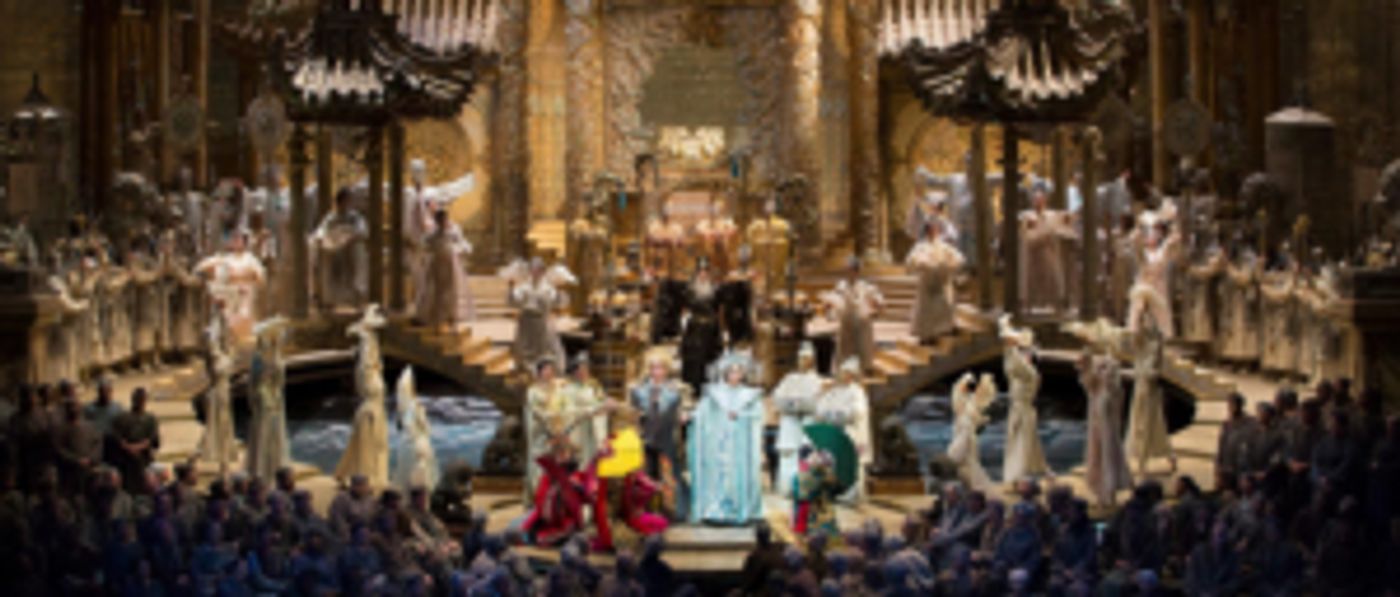Review: TURANDOT At The Metropolitan Opera

Birgit Nilsson, one of the greatest Turandots of our time, was fond of saying that Wagner made her famous but TURANDOT made her rich. Why was this so? Simply because very few sopranos can toss out the high notes, cut through the thick orchestration and sing over the huge chorus, which are the minimum requirements to approach this role. Those who can are amply rewarded.
The Met revived, possibly for the last time, the beloved Franco Zeffirelli production that has been gracing its stage sine 1987. Prior to that, the only other production of TURANDOT seen at the Lincoln Center house was Cecil Beaton's, which premiered at the old opera house in 1961. It lasted until 1975. The Zeffirelli version is ornate to say the least, probably overly so; the second scene of the second act, where Turandot poses the the three riddles to Calaf, takes place in the palace throne room and never fails to elicit waves of applause. Unfortunately, the sets overwhelm the singers and the audience. You cannot take your eyes off them. There is not a moment when the choristers or ballet dancers are not in perpetual motion, waving flags and brandishing fans. Turandot herself is guilty of signaling semaphore-like gestures toward Calaf while posing her riddles. Less action would allow the audience to focus on the voices and the music.
The most beautiful of the sets was that for the first scene of the third act, where Calaf sings the magnificent "Nessun Dorma". The scene is in various shades of moonlit blue with a river stretching into the distance. Gorgeous!
Christine Goerke brought her Turandot to the house for the second time. She first sang it in 2015. Ms. Goerke more than did justice to the role. She has the dramatic soprano voice to cope with the brutal tessitura and her high notes were on target. She inhabited the beautiful costumes, designed by Anna Anni and Dada Saligeri, impressively. It difficult to navigate the many-tiered sets in these costumes, curtain-calls being especially treacherous. Yusuf Eyvasov sang the heroic Calaf. He, too, had the night notes, and they rang out, especially during his big aria in the third act. However, his voice becomes somewhat bleaty in the mid-range or "passaggio". Eleanora Buratto, who made a sensational debut as Norina in Donizetti's DON PASQUALE in 2016 was Liu. She has a clear, well-focused lyric soprano that did justice to the pathetic slave girl, who sacrifices herself for love of Calaf, and received an extended ovation at her curtain call. James Morris sang Timur. He is coming up on fifty years with the Metropolitan Opera. He sang beautifully. The three ministers, Ping, Pang, and Pong, were voiced effectively by Alexei Lavrov, Tony Stevenson, and Eduardo Valdes. They were asked also to wave fans and engage in stage action which was distracting from their music, much of which was quite moving and elegiac. The opera was directed by Paula Suozzi.
Music Director Yannick Nezet-Seguin conducted the Met orchestra, in a well-paced performance and accommodated his singers who were competing with heavy orchestration.
Franco Zeffirelli recently passed, but his legacy currently includes LA BOHEME and TURANDOT.
He certainly made his mark during his very long Met career which extended to the mid-sixties. He will be missed.
George Weinhouse
Reader Reviews
Videos

